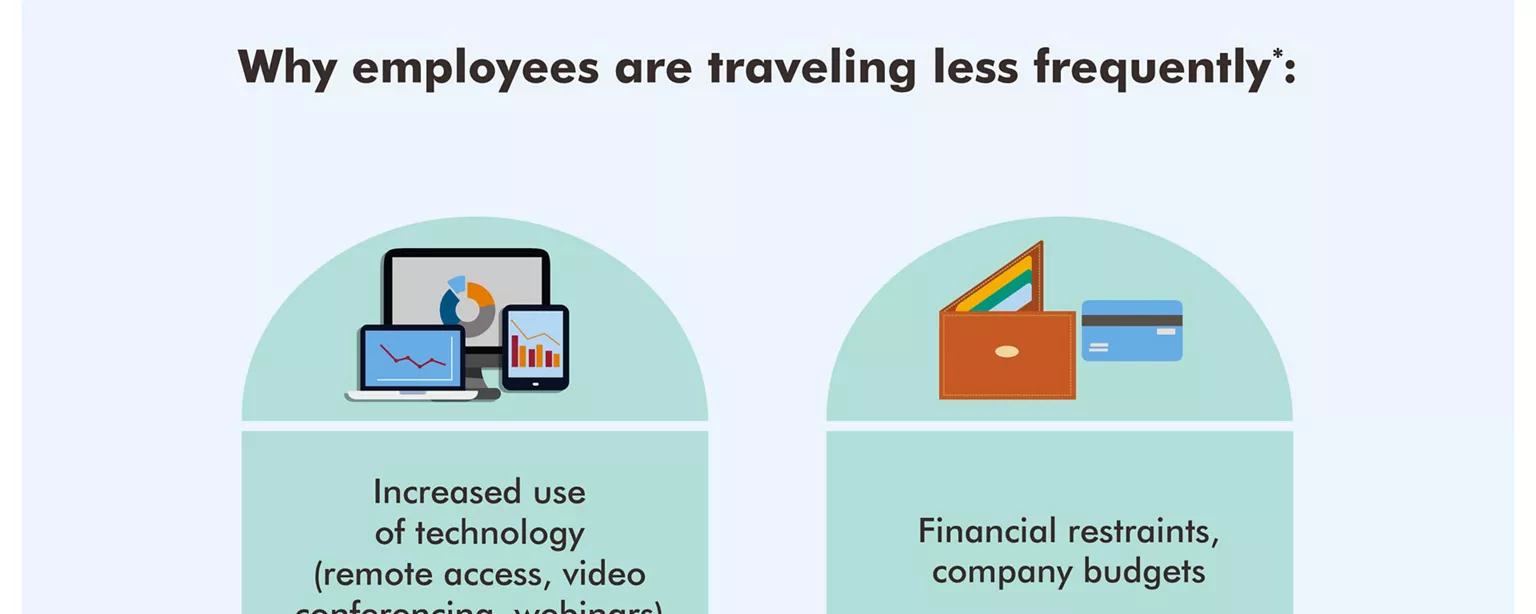Getting Down to Business While Traveling
Are employees traveling for business more or less frequently now versus five years ago?
| Much more frequently 2% |
| Somewhat more frequently 12% |
| There has been no change 63% |
| Somewhat less frequently 10% |
| Much less frequently 4% |
| No business travel at the company 9% |
Why employees are traveling more frequently*:
| Professional development opportunities |
| Company growth |
| Clients or employees in different areas |
Why employees are traveling less frequently*:
| Increased use of technology (remote access, video conferencing, webinars) |
| Financial restraints, company budgets |
BEST PRACTICES OF BUSINESS TRAVEL
| #1. Pack wisely. Bring just one carry-on bag to avoid the risk of lost luggage. If that’s not possible, pack key items you’ll need for meetings (e.g. suit, toiletries, laptop, important documents) in your carry-on and check the rest of your belongings. |
| #2. Arrive early. Get to your destination at least one day before your meetings to avoid stress from travel delays. |
| #3. Protect your work data. Take precautions if you’re working at an airport or on an airplane because public internet connections are unsecure. Also, be aware of your surroundings when on confidential work calls and assume everyone within earshot can be a competitor. |
| #4. Prepare for technology failures. Wi-fi isn’t always available. Print hard copies of business documents, save files you’ll need to access to your desktop and set and out-of-office email message alerting contacts that your response may be delayed. |
| #5. Network. Be open to conversations with fellow travelers and have business cards at the ready. The person near you in line or next to you on a flight may be a good business contact. |
Source: Robert Half survey of more than 300 human resources managers in the United States
*Top responses shown.
© 2017 Robert Half International Inc. An Equal Opportunity Employer M/F/Disability/Veterans.






